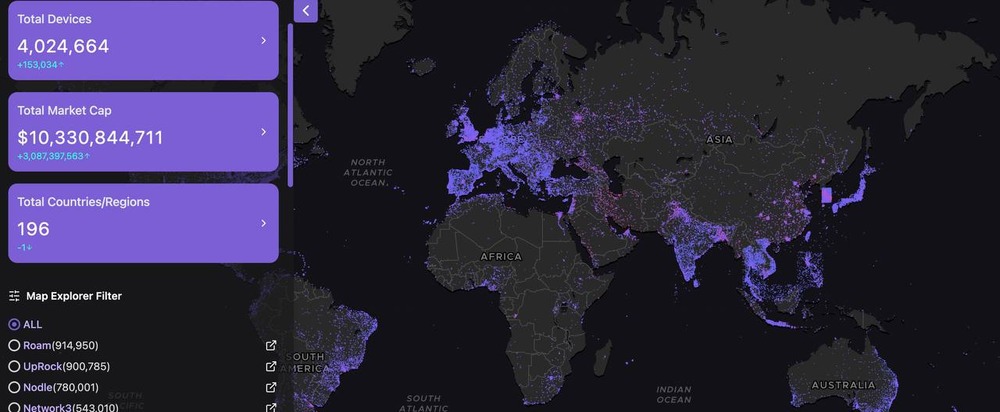Roam Achieves Global Leadership in Hardware Node Count with Innovative WiFi Solutions

As of December 4, 2024, Roam has officially claimed the top position globally for hardware node count, as reported by DePINscan. Utilizing OpenRoaming™ technology, Decentralized Identifiers (DIDs), and Verifiable Credentials (VCs), Roam allows users to connect to WiFi without the hassle of multiple credentials or lengthy login processes. This innovative approach, combined with a robust community incentive mechanism and a free-to-use business model, has led to rapid user growth. Currently, Roam supports over 4 million OpenRoaming WiFi hotspots and 890,000 self-built nodes across more than 190 countries, boasting over 1.5 million registered users and an impressive average of 500,000 daily user interactions. The platform has successfully transitioned numerous traditional users into the Web3 ecosystem through its latest eSIM product, exemplifying mass adoption of Web3 applications.
Roam’s user growth strategy is anchored in product design, integrating Roam WiFi connectivity and eSIM services. The token-incentive model encourages users to contribute to the network’s development by validating WiFi nodes, attracting traditional users to collaboratively build the WiFi network. Roam’s eSIM offerings include the Roam Global eSIM, which operates in over 160 countries with an innovative Top-up mechanism to prevent data wastage, and the Add-on eSIM, which provides access in regions lacking roaming services. The introduction of Roam eSIM has significantly increased traditional user participation, pushing app registrations past 1.5 million and expanding the network to nearly 5 million global WiFi access nodes.
Committed to establishing a next-generation global open wireless network, Roam employs a Physical Layer 1 (L1) approach to deliver a free, secure, and seamless user experience. By maintaining a location and time-based data ledger, Roam aims to enhance both supply and utilization growth through token incentives while promoting community-based management. This strategy reflects Roam’s mission to cultivate a more open and diverse ecosystem, fostering long-term value for users. Transitioning from conventional reward systems to nurturing deeper relationships, Roam positions every user as a stakeholder in the network-building process, sharing benefits and creating transformative opportunities for the community. As a pioneer in the decentralized network landscape, Roam is set to revolutionize connectivity between devices, humans, and AI agents, paving the way for sustainable growth and a more interconnected digital future.
Related News





